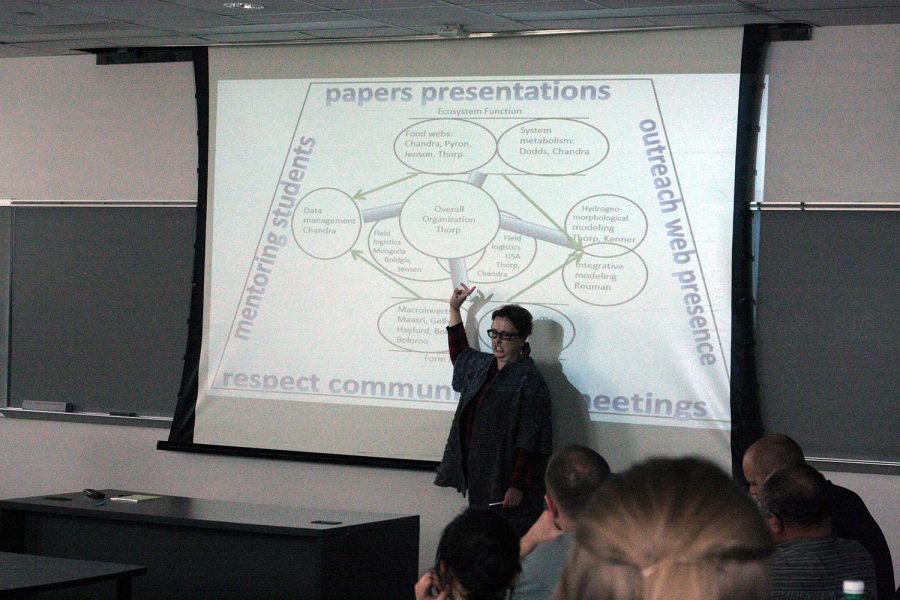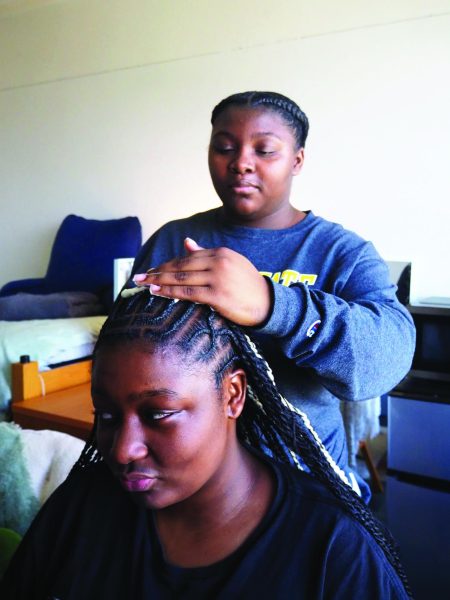Students can study fish and rivers in Mongolia
Dr. Hayford presents to students and faculty about the microsystems ecology of rivers. She invites students to participate in a research project in Mongolia.
February 10, 2016
More than 50 students and faculty stayed on campus Friday, Jan. 29, to listen to life science professor Barbara Hayford’s lecture on ecology.
The room was nearly packed as Hayford presented her lecture entitled “Microsystems Ecology of Rivers in North America and Mongolia.”
“There is a role for undergraduate research students at Wayne State College in this really interesting project,” Hayford said. “If they did participate, not only would they fill their curriculum requirements, but they would also gain a lot by meeting different people from other countries and research backgrounds.”
Hayford has taught at WSC for 12 years now and is working with 20 years of research since she went to Mongolia in 1995.
Scientists from Mongolia are on board, and individuals from other countries like Germany have also collaborated with the research.
Some students from WSC have had the opportunity to study in Mongolia in the past with the aid of grants.
“I started this project in the 2000’s because I thought Mongolia could serve as a reference as to what’s happening in the United States,” Hayford said.
In Mongolia, there are signs of climate change and desertification, and by studying rivers these scientists are looking to find out more about what’s happening.
Problems like sheep and goats that graze until the ground is bare are part of the process. The number of sheep per household has also risen in Mongolia. Clearing the ground like this can produce dirt and runoff that goes into the river, affecting the fish and insects.
However, research also still has to be done in the United States.
Hayford mentioned three ongoing projects by students, including one by senior biology major Marty Kreitman.
“I’m looking at fish scattered throughout different rivers in Nebraska to see what drives the changes in them. Are they different or are they similar, and if they are different, what is causing that difference between them?” Kreitman said.
Kreitman is solely focusing on the fish community throughout different rivers in Nebraska. Right now he is working on processing data that had already been collected.
This project is not in direct connection to Hayford’s study, but they are related in the fact that they are dealing with studies on fish and rivers.
Hayford asked the question, how should we study rivers?
She then proceeded to give different examples with her emphasizing the idea of looking at it like a watershed and using satellite data as well.
In this project, the group wants to study two different rivers–one in Mongolia and the other in the U.S.—to see the difference not only in location, but function and metabolism as well.
In March, the group will get together and select the first great basin for the river section.
Currently, the group is using outreach pages like Facebook and local communities to get people more informed about this project and the environment. As seen by the crowd turnout, there seems to be a good deal of support.
“I really enjoyed giving that talk and it was a lot of fun. It’s been a great 20 years,” Hayford said.









